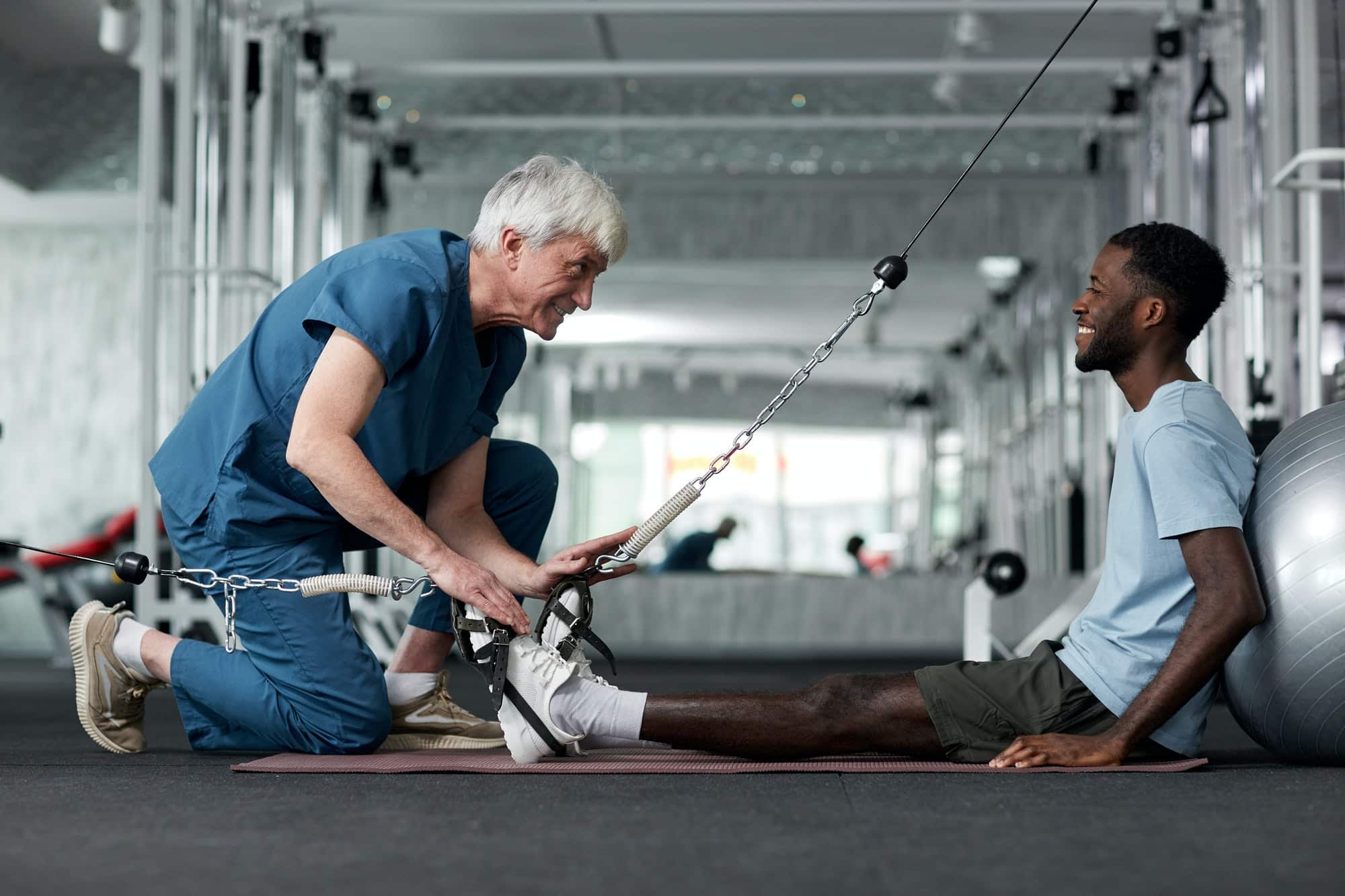How Can Anti-Gravity Treadmills Assist in Lower Limb Injury Rehabilitation for Long-Distance Runners?

You are pounding the pavement, your body rhythmically hitting the ground as you clock up the miles. The wind brushes past your face, but suddenly, there’s a sharp twinge in your lower limb. An injury. As long-distance runners, you are all too familiar with the risk of lower limb injuries. But the road to recovery can often be long and painful. However, there’s a new form of physical therapy gaining traction; the anti-gravity treadmill. In this article, we’ll delve into the benefits of this innovative rehabilitation equipment, exploring how it works, and how it can assist long-distance runners on their journey back to full health and fitness.
Understanding the Anti-Gravity Treadmill
Before we discuss how anti-gravity treadmills can assist in rehabilitation, it’s essential to understand what they are and how they work. These innovative machines were developed by a company known as AlterG, using technology initially designed by NASA to help astronauts maintain their physical health in a zero-gravity environment.
A lire également : What’s the Role of Personalized Medicine in Treating Chronic Tendon Injuries in Athletes?
These treadmills, unlike their traditional counterparts, are designed to reduce the weight of a runner drastically. How does it achieve this? The user steps into shorts that are then zipped into a pressurized, airtight enclosure that covers the treadmill’s lower part. The machine then uses air pressure to significantly reduce the runner’s effective weight, reducing the impact on the body as they run.
This reduction in effective weight means that the user experiences less impact and stress on their muscles, bones, and joints, making it an ideal tool for athletes recovering from injuries. It allows them to maintain their cardiovascular fitness without the associated pain and risk of further injury.
En parallèle : How Can Kinematic Analysis Software Be Used to Improve Technique in Discus Throwers?
Anti-Gravity Treadmills for Lower Limb Injuries
Lower limb injuries are common in sports, particularly distance running, where repetitive movement and high-impact forces can result in significant stress on the legs. When you’re dealing with an injury, the standard approach is to rest and allow the body time to heal. But with the AlterG anti-gravity treadmill, the rules have changed.
This rehabilitation equipment allows athletes to continue their training, albeit at a lower intensity and speed, while their body recovers. By reducing the weight on the injured limb, it minimizes pain and reduces the risk of further injury. It provides the required support for the lower limb while allowing the runner to maintain a semblance of their regular training routine.
Various studies and scholarly articles, many of which can be found on PubMed, have shown that using an anti-gravity treadmill can speed up recovery from lower limb injuries. It offers the opportunity to start rehabilitation earlier, which is crucial for long-distance runners who are keen to return to their training regime.
The Role of Gravity in Running and Rehabilitation
Gravity plays a significant role in running. It’s the force that pulls you down and makes your feet hit the ground. The impact generated when your body weight hits the surface can be up to two to three times greater than your actual weight, putting immense pressure on your lower limbs. This repetitive impact can lead to injuries over time.
Anti-gravity treadmills effectively reduce this gravitational pull, thus lessening the impact on injured limbs. They allow for a controlled and gradual increase in weight-bearing, which can help in the healing of fractures, sprains, and other lower limb injuries.
Pain Management and Physical Therapy
The AlterG anti-gravity treadmill not only aids in rehabilitation from injuries but also plays a significant role in managing pain. With its ability to minimize the impact on the lower limbs, users can run or walk without experiencing the pain they would usually feel on a regular treadmill or when running outdoors.
It’s a modern form of physical therapy that provides a controlled environment for exercising without exacerbating the injury. By adjusting the air pressure, therapists can easily control the individual’s weight, speed, and stride, allowing for a personalized and tailored rehabilitation plan.
Incorporating Anti-Gravity Treadmill Training into Your Recovery
To integrate anti-gravity treadmill training into your recovery process, you’d need to work closely with your physical therapist or sports physician. They can design a custom program that considers the nature of your injury, your overall fitness level, and your running goals.
The treadmill’s settings can be adjusted as your body heals, gradually increasing your body’s weight-bearing capacity. This gradual increase, combined with the treadmill’s capacity to accurately measure progress, allows for precise monitoring of your recuperation.
The AlterG anti-gravity treadmill revolutionizes the process of rehabilitation by allowing you to maintain your fitness levels during recovery. It’s a significant step forward in sports medicine, providing a unique solution for long-distance runners suffering from lower limb injuries.
Enhanced Performance with Anti-Gravity Treadmill Training
The AlterG anti-gravity treadmill has brought about a significant shift in how athletes approach their training and rehabilitation from injuries, especially lower limb injuries. The concept behind this equipment lies in the manipulation of gravity’s effect on the body. By reducing the body weight of the runner, it minimizes the impact and stress on the lower extremity during running.
Upon stepping into the treadmill, the user is zipped into an airtight enclosure. Using air pressure to counteract gravity, the weight support system allows for decreased weight-bearing on the lower body. The machine’s innovative technology helps to control and reduce the effective weight of the runner gradually, hence reducing the strain on the muscles, joints, and bones.
This method of treadmill training comes with numerous benefits. The technology allows for a more tailored, controlled, and gradual approach to increasing weight-bearing. This is extremely beneficial for athletes recovering from fractures, sprains, and other lower limb injuries.
Furthermore, anti-gravity treadmills have also been documented on PubMed Google and Google Scholar for their role in enhancing performance. The treadmill offers the opportunity to maintain cardiovascular fitness levels during the recovery period. By reducing the risk of further injury, it allows the athlete to resume running much earlier than traditional rehab methods.
Conclusion: Anti-Gravity Treadmills – A Leap Forward in Physical Therapy
To conclude, anti-gravity treadmills represent a remarkable advancement in physical therapy, particularly for long-distance runners. The innovative technology behind these machines, initially developed by NASA and commercialized by AlterG, presents a groundbreaking approach to injury rehabilitation and performance enhancement for athletes.
The use of air pressure to decrease body weight and reduce gravitational strain on the body allows for a controlled and gradual return to full weight-bearing. This can speed up the recovery process and reduce the risk of further damage to the lower extremity. Furthermore, it provides an adapted environment for maintaining cardiovascular fitness without exacerbating pain or injury, which is typically associated with ground running.
Several scholarly articles on PubMed Google and Google Scholar have endorsed the efficacy of anti-gravity treadmills in accelerating recovery from lower limb injuries. By incorporating this advanced tech into their recovery programs, athletes can gain a significant edge in their performance and overall fitness.
In the ever-evolving world of sports medicine, the AlterG anti-gravity treadmill stands out as a game-changing tool that bridges the gap between injury and full recovery. It’s an investment in health, performance, and the joy of running.
